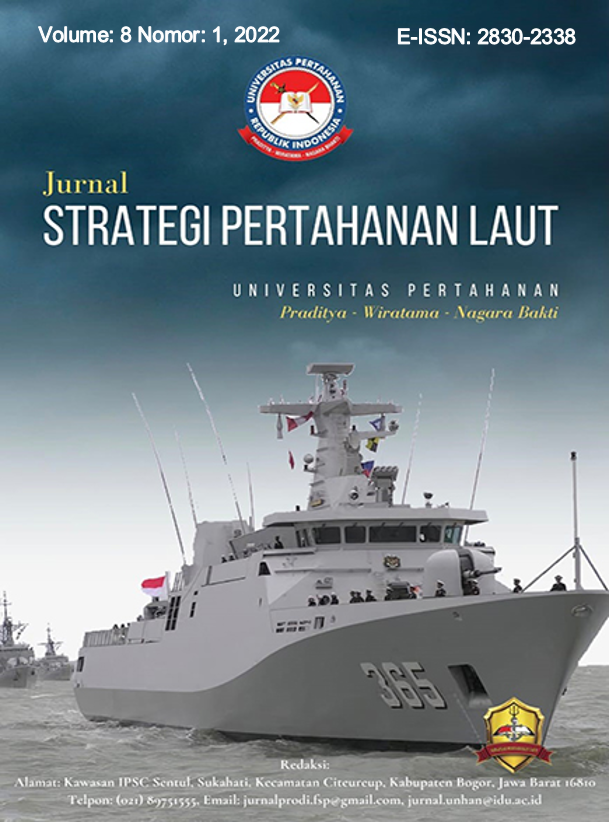SOCIAL COMMUNICATION STRATEGY THROUGH SPILL MARKET ACTIVITIES TO ACHIEVE NATIONAL SECURITY IN CIMAHI CITY
DOI:
https://doi.org/10.33172/spl.v8i1.1053Abstract
National security is the basic need of every citizen besides welfare. One
of the ways to achieve national security is to increase the deterrence power of the community in dealing with every problem in their environment. Therefore, 15th/Kujang II Infantry Brigade strives to embody those purposes with social communication strategy through spilled market activity. Social communication development is one of several methods of Territorial Management of the Indonesian Armed Forces in the form of communication activity that is carried out effectively and sustainably. This social communication strategy is applied as a medium for socialization, as a medium for equalization of vision, mission and interpretation of media for coordination, integration, synchronization and simplication as well as a means to improve, maintain and strengthen the unity of the Indonesia Armed Forces and society in order to achieve main tasks of Indonesia Armed Forces. Yet in implementing territorial management through that social communication development, this endeavor is still not in accordance with the expected goals. Therefore, in order this spilled market activity does not seem like a common market in general, this study was conducted to analyze the social communication strategy of the 15 th /Kujang II Infrantry Brigade also the constraints in its progress through spilled market activity to embody national security in Cimahi City.
In order to achieve that purpose, this research is conducted with qualitative method, depth-interview technique, passive observation and document review. This research found that social communication strategy that was conducted by 15 th /Kujang II Infantry Brigade is by educating society about social problems that occur in the society and their role in problem solving in the community. 15 th /Kujang II Infrantry Brigade also conducting territorial guidanve to the whole community that the community also plays a role in realizing national security through awareness, as it is their role as an early detection and early prevention in a society, as a form of deterrence for threats. While the constraints encountered in fostering social communication are mechanicaldisturbances, factors of interest, motivation and prejudice by the public of what isintended by 15 th /Kujang II Infantry Brigade.
Keywords : National Security, Territorial Management, Social Communication, Strategy, Indonesia Armed Forces
References
Buzan, Barry, Waever, Ole & Wilde, Jaap De. 1998. Security: A New Framework for
Analysis.. London: Rienner Publisher.
Friis, Lykke. 1996. When Europe Negotiates: From Europe Agreements to Eastern
Enlargement.. Copenhagen: Institute of Political Science University of
Copenhagen.
Gajar, Ari. 2017. “Role and Function of TNI AD Territorial Development in Local
Government Assistance: Studies in Lebak Regency”, Journal of Government
Science. Vol. 3, No. 1.
Hayani , Nurahmi . 2012 . Marketing Management for Economic Education. Pekanbaru:
Suska Press .
Indrawan, Jerry. 2015. “Empowerment-Based Leadership in Technology Transfer: An
Effort to Improve the Quality of Indonesian Defense Human Resources”, Defense
Journal, Vol. 5, No. 1.
Indrawan, Jerry. 2015. “Change of Indonesian Defense Paradigm from Territorial
Defense to Maritime Defense: A Proposal”, Defense Journal. Vol. 5, No. 2.
J., Salusu. 1996. Strategic Decision Making for Public Organizations and Non-Profit
Organizations. Jakarta: PT Grasindo.
Morgenthau, Hans J.. 1973. Politics Among Nations: the Struggle for Power and Peace.
New York: Alfred A. Knopf.
Rothschild, Emma. 1995. “What is Security?”, Deadlus, Vol. 124, No. 3.
Susanto, Phil. Astrid. 1985 . Social Communication in Indonesia. Bandung: Binacipta .
Smiljanic, Drazen. 2016. “Sustainability and National Security”. Croatian Defense
Academy.
Tjiptono, Fandy. 2008. Marketing Strategy. Edition 3. Yogyakarta: Andi.
Website
Indra Komara. December 4, 2018. What Triggered the KKB to Kill 31 Trans Papuan
Workers?. Detik news. Accessed at: https://news.detik.com/berita/d-4330646/apapemicu-
kkb-kill-31-pekerja-trans-papua (accessed on 02/02/2020)
Downloads
Published
How to Cite
Issue
Section
License
Proposed Policy for Journals That Offer Open Access. Authors who publish with this journal agree to the following terms:
- Authors retain copyright and grant the journal right of first publication with the work simultaneously licensed under a Creative Commons Attribution License that allows others to share the work with an acknowledgment of the work's authorship and initial publication in this journal.
- Authors are able to enter into separate, additional contractual arrangements for the non-exclusive distribution of the journal's published version of the work (e.g., post it to an institutional repository or publish it in a book), with an acknowledgment of its initial publication in this journal.
- Authors are permitted and encouraged to post their work online (e.g., in institutional repositories or on their website) prior to and during the submission process, as it can lead to productive exchanges, as well as earlier and greater citation of published work (See The Effect of Open Access).
Proposed Policy for Journals That Offer Delayed Open Access. Authors who publish with this journal agree to the following terms:
- Authors retain copyright and grant the journal right of first publication, with the work [SPECIFY PERIOD OF TIME] after publication simultaneously licensed under a Creative Commons Attribution License that allows others to share the work with an acknowledgment of the work's authorship and initial publication in this journal.
- Authors are able to enter into separate, additional contractual arrangements for the non-exclusive distribution of the journal's published version of the work (e.g., post it to an institutional repository or publish it in a book), with an acknowledgment of its initial publication in this journal.
Authors are permitted and encouraged to post their work online (e.g., in institutional repositories or on their website) prior to and during the submission process, as it can lead to productive exchanges, as well as earlier and greater citation of published work (See The Effect of Open Access)

